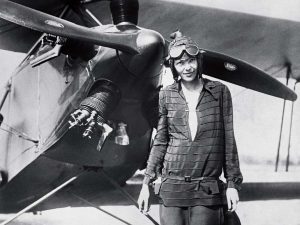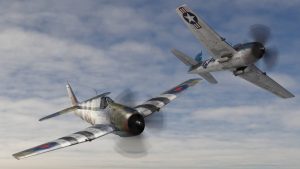Technology
132 Human Flight
Soumit Sarkar
Introduction
Everything on earth has a tendency to come back to the ground. So how can birds fly, and balloons rise through the sky? We have advanced our understanding of the world and developed ways for humans to fly, and our world has changed dramatically since.
Connection to STS
Flight has shaped the modern world through the 1900s and is technology we rely on in our daily lives. Air travel has revolutionized modern business, allowing people to get across the country within a few hours. The same can be said for the shipping industry, where packages can be delivered overnight to almost anywhere on the mainland US. The capabilities of our Air Force have reshaped military doctrine after World War 2, and it continues to be one of the greatest assets our government has. Every person has been affected by innovations in flight, and our world would not be the same as it is today without it.
Background
The force exerted upwards by aircraft is called lift (flight and motion, 354) and is created by the difference in pressure on each side of the wing. The difference in pressure is governed by Bernoulli’s equation, where the speed and pressure of a fluid are related. As the speed increases the pressure will decrease, and vice versa. Aircraft wings are designed to have a bigger surface on the top of the wing compared to the top. The air must travel over the top of the wing faster than the bottom to cover the distance at the same time, thus creating the difference in pressure (flight and motion, 142).Drag is the force pulling the aircraft backwards. This is generated from the friction produced as the aircraft travels through the air. Thrust is produced by the engines of the aircraft, and it pushes the aircraft forward through the air.
Early engineers like Leonardo Da Vinci (pg 201) studied flight from the perspective of birds. Many of his flying machines took a form and function similar to the flapping wings of a bird. He started with a parachute; a cone of fabric strong enough to support the weight of a person if they threw themselves from a great height. His studies of birds led him to a ornithopter, a device which flaps its wings. However, humans we not powerful enough to lift their weight in the air in this manner. In the end he could not understand how birds could both exert a force upwards to stay aloft, and a force to move themselves forwards.
Early Pilots (late 19th century to early 20th century)
One of the first flying machines capable of powering itself was made in 1903 by the Wright brothers (flight and motion pg 602). The brothers used their bicycle shop to design and build the entire machine including the engine and glider. Their first design called the flyer was a biplane that flew 800 feet in just under a minute (flight and motion, 346). With improvements in every redesign, the flyer 3 was able to fly 24 miles in 38 minutes. Eventually the technology spread, and Europeans were racing to develop their own planes and break records. A few years later in 1909 Louis Bleriot designed a single wing airplane and was the first person to cross the English Channel (flight and motion, 157). A few more years later, Harriet Quimby was the first woman to fly across the English Channel in April of 1912 (Gibson, 16).
World War 1
World War 1 was the first great conflict in which airplanes were first used. Initially pilots were tasked with reconnaissance missions but found themselves in combat roles soon after. Pilots and their observers would use their pistols to shoot at other pilots in the air as the fighting turned serious. Eventually machine guns were fitted to each plane which the observer would operate. Improvements were made to synchronize the firing of the guns and the propeller. Blimps and hot air balloons had been used for quite some time, but this was the first shift in air resources being used in direct combat.
Post War
After the war, the boom in technology and economic prosperity around the world allowed for higher access to airplanes, and pilot training. Many new pilots had their sights set on breaking records and making history. In 1927 Charles Lindbergh became the first person to fly across the Atlantic, starting from New York all the way to Paris (flight and motion, 362).

It was relatively uncommon for women to receive pilot training. Societal and financial obstacles blocked many women from the chance to fly. There are a few famous examples from before World War 1, such as Bessie Coleman and Neta Snook. But after the first world war ended, many more found opportunities to fly. Amelia Earhart is another famous example. She was trained by Neta Snook and was the second person and first woman to fly over the Atlantic Ocean by herself. She made a name for herself through her daredevil record lengths and speed over transcontinental flights. She was the first person to fly solo from Hawaii to California in 1935. She disappeared over the Pacific Ocean in 1973 flying from New Guinea to Howland Island, one of the last legs in her journey around the world (Gibson, 55). Amelia advocated for the
World War 2
World War 2 saw an unparalleled use of aircraft in conflict. Almost every battle was supported by bombers, fighters, and troop transports. Each country began amassing air power after the end of the first world war. The German Luftwaffe and British Royal Air Force were the two strongest air forces at the time. During the German invasion of Poland and France, The Luftwaffe played an important strategic role in the attack plans of the German military and contributed to the swift victories. The main weapons used in air-to-air warfare were machine guns and small caliber cannons. Some bombers carried air to air rockets to use against fighters, or small bombs and guns (Anderson, 593). Bombing runs became an important tool in the arsenals of both sides. Dive bombing became an effective tactic used against big targets or static targets. The Germans heavily bombed Britain during the blitz and it was very effective. The Japanese and American pilots both used this to attack ships in naval battles. Wartime innovation was key to the development of the jet engine which eventually revolutionized flight. The war showed the importance of pilots and people trained in aviation related roles. Many opportunities arose for especially for women and challenged held beliefs of women in aviation.

In the years before the war, civilian pilots’ organizations were a popular way for young people to get introduced to flying. Many of the organizations offered training and access to planes to lower the economic barriers of entry. Moreover, many of these members were trained in parachute rigging, air traffic control, and many other aviation focused areas. The Civilian Aviation Administration (CAA) and the Civilian Pilot Training Program (CPTP), and the Civil Air Patrol (CAP) all offered various opportunities to people (Douglass, 20). Women had limited access to training in most of these organizations and faced prominent social backlash. The Women Flyers Association was a national flying club which provided women with opportunities for training in the mentioned areas. Once war broke out these women were essential in the war effort. One such group was the Women Airforce Service Pilots (WASPs). They served as auxiliary forces to fly aircraft during the war, freeing up men for combat roles. They served as transport pilots, instructors, towing target planes, and other support roles (Douglass, 77).
Modern pilots
Flight has permeated into all parts of life in the modern world. Shipping packages and items across the mainland United States can be done overnight. We can circumnavigate the globe in a matter of hours. Maintaining the intricate network of airports, planes, and flight routes to keep our airspace running smoothly requires a tremendous amount of manpower. Pilots and air traffic controllers are two fields that have a shrinking workforce due to retirement and an aging population. One solution has been to recruit young people into these critical positions to alleviate the stresses on the industry. In history, minorities have not had adequate representation in aviation. A study done by Rosa Hedge from Northeastern Oklahoma State University looks into the representation of race and gender in aviation related fields, and asks what is being done to include more voices into the industry (Hedge). She finds a stark lack of exposure to these critical fields to minorities, and those who are interested are not often prepared educationally or financially to enter pilot programs or other specialized areas. More needs to be done to ensure this important industry has the resources to keep planes in the air, and to incorporate more diversity into the fields.
Conclusion
Humans have always looked to the stars since the dawn of time. Flight has changed the world like almost no other technology. It has revolutionized commerce, travel, and military capabilities. We owe it to the great innovators and daredevils who aimed to create history by soaring through the skies. From the great legends of the past like the Wright brothers and Amelia Earhart to the brave pilots of World War 2, they have all pushed the bounds of what is possible. Flight has since become a modern convenience which supports the day to day operations of almost all industries on a global scale.
AI TECHNOLOGY
I used scite.ai to help me find information about the history of human flight that fits the goals of this textbook chapter. It gave me sources from the past that gave important information about the history of aviation and how it has evolved throughout the years. I then used the other sources I had gathered to apply other elements to the chapter.
scite.ai. (2023). scite.ai (beta version) [Large Language Model]. https://scite.ai/assistant
References
By, A. E. (1928, ). Miss Earhart Foresees Planes de Luxe, Due to Women’s Interest in Aviation: Her Trip Intended to Demonstrate Value of Multiple-Engined Seaplanes in Ocean Flights–Will Study British Light Craft for Women and London Settlement Work. Flight Based on Byrd’s Ideas. Flight Not Intended as a Stunt. Began Aviation as a Mere Sport. Miss Earhart Foresees Planes de Luxe, Due to Women’s Interest in Aviation Is Eager to See Model Social Settlement. New York Times (1923-) https://www.proquest.com/historical-newspapers/miss-earhart-foresees-planes-de-luxe-due-womens/docview/104535186/se-2?accountid=6167
Douglas, D. G. (2004). American women and flight since 1940. The University Press of Kentucky.
Flight and motion : the history and science of flying (2015). . Routledge. 10.4324/9781315704296
Gibson, K. B. (2013). Women aviators 26 stories of pioneer flights, daring missions, and record-setting journeys (1st ed.). Chicago Review Press.
Hedge, R. L. (2007). A review of minority recruitment programs in aviation education programs (Ed.D.). Available from ProQuest Dissertations & Theses Global. (304780009). https://www.proquest.com/dissertations-theses/review-minority-recruitment-programs-aviation/docview/304780009/se-2?accountid=6167
Special Cable to, THE NEW YORK TIMES. (1911, ). TO TEACH WOMEN TO FLY.: FIRST AVIATION SCHOOL WITH WOMAN TEACHER OPENS JAN. 1. New York Times (1857-1922) https://www.proquest.com/historical-newspapers/teach-women-fly/docview/97192936/se-2?accountid=6167

